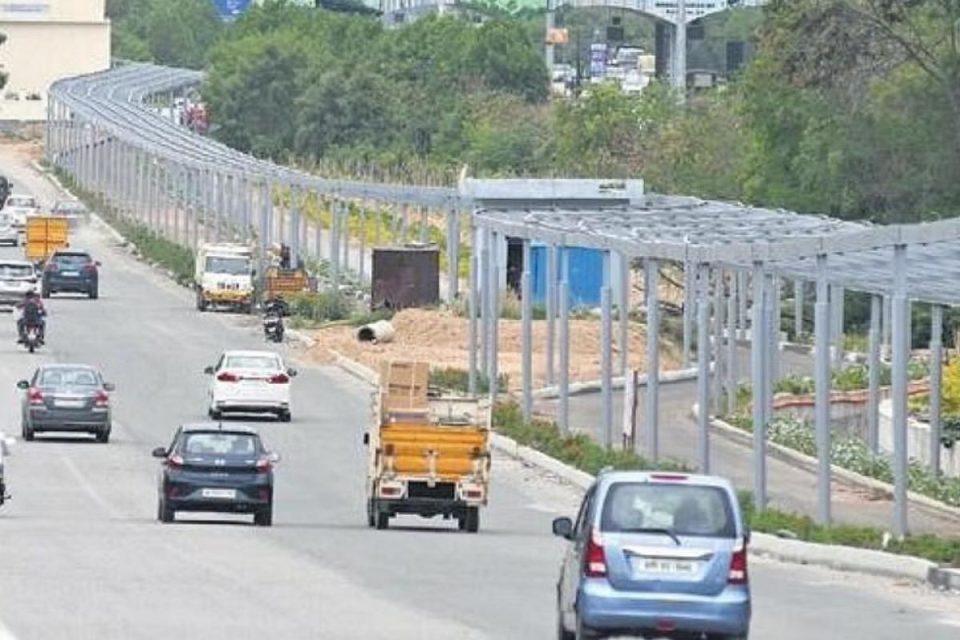People enjoy cycling for various reasons, but the issues concerning pollution, traffic congestion, and the potential for accidents with vehicles often lead people to opt for alternative modes of transportation. However, Hyderabadis showed positive signs indicating a shift to cycling, particularly if they have an option with a safer and more secure environment.
An innovative sustainable solar roof cycling track called Healthway was introduced near Hyderabad’s Outer Ring Road (ORR), to promote cycling as an eco-friendly lifestyle. The 23-kilometer track is rapidly under construction and features three lanes divided into two stretches, where one stretch covers 8.5 kilometers from Nanakramguda to Telangana State Police Academy (TSPA) and the other tracks stretches over 14.5 kilometers from Kollur to Narsingi, both the track coincides at Narsingi Junction.
KMV Projects Limited is the company that is associated with constructing tracks and it aims to encourage cycling in between lush green surroundings. With the access points at Nanakramguda, Narsingi, TSPA, and Kollur, where cyclists can conveniently enter and exit the track from different parts of the city.
According to Prudhvi Ram Kanakamedala- CEO of KMV Projects, the cycling track near Hyderabad was an inspiration from the South Korean bike highway with solar panels. He explains that the South Korean track primarily highlights solar power generation, their project plays a vital role in providing an enhanced cycling experience, with solar roofs as an additional feature. Prudhvi spotlighted that the South Korean track doesn’t have necessary amenities. He stands on a track that features a durable six-coat protective layer of acrylic polyurethane. This unique 6 layers are resistant to weather, water & oil, dries quickly, offers improved grip, and reduces the impact of falls for cyclists.
Approximately 50 CCTV cameras are installed at entry and exit points, monitored by the police department. Stainless V-shaped columns steel provide protective barriers along the path, while the GI sheets roof with an anodized coating is obtained from an Ahmedabad factory and was crafted on-site. To improve the project’s uniqueness, collaborations were made with experts from the Indian Institute of Technology, Hyderabad, and Osmania University’s College of Engineering. Customization of panel designs and the creation of modular components were possible with this collaboration.
Two among five amenity points, featuring car parking, cycle repair and rentals, and food trucks, have been planned to open at Narsingi and TSPA during the inauguration. A team of 800 individuals, including construction workers, architects, engineers, and consultants, have been sincerely working on this project since October.
According to Prudhvi’s explanation, “The highlight of the 100-crore project is the sustainability aspect, which is achieved through the installation of 16mw solar panels on the roof. This approach avoids the need for almost 64 acres of land, as the solar panels frees up space beneath for cycling activities”. The 30,000 solar panels will not only brighten with warm golden tube lights, they also generate power back to the grid. “It would take 15 years to recoup the invested money. They are saving land and generating the power which makes it sustainable naturally. The solar roof ensures the protection from sun, rain, pollution and also avoids accidents”. “There might be low production of power in Hyderabad for 40 days due to fluctuations of radiation levels, but the rest of the months will see good production”, Prudhvi stated.

